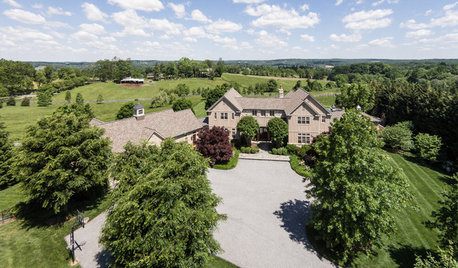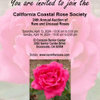Frightening news...
roseseek
5 years ago
Featured Answer
Comments (41)
Tessiess, SoCal Inland, 9b, 1272' elev
5 years agoroseseek thanked Tessiess, SoCal Inland, 9b, 1272' elevRelated Discussions
Quotes, 10-4-14
Comments (3)I agree completely with Marjorie Pay Hinckley. In so many instances, I know that if I don't laugh, I'll cry, and laughing is more fun....See MoreQuote, 10/13/13
Comments (1)My religion is very simple. My religion is kindness. Dalai Lama...See MoreJust Noting What Day it is
Comments (1)Well said, Suzy. Young people in particular must be reminded that this dread illness is still claiming victims today. josh...See MoreFrightened Momma Duck
Comments (1)Annebelle, Check out the Emergency Bird care and FAQs link over at the bird watching forum. If you don't find an answer there, try posting your question there, since I know there have been rehabbers who spend time there. Good Luck. Lori Here is a link that might be useful: Bird Watching forum...See Moreroseseek
5 years agoroseseek
5 years agojerijen
5 years agoLisa Adams
5 years agoingrid_vc so. CA zone 9
5 years agoLisa Adams
5 years agolast modified: 5 years agoSheila z8a Rogue Valley OR
5 years agohenry_kuska
5 years agodebrak6
5 years agoLisa Adams
5 years agolast modified: 5 years agodebrak6
5 years agojerijen
5 years agoshebabee
5 years agoroseseek
5 years agolindaperry_9b
5 years agohenry_kuska
5 years agolast modified: 5 years agolindaperry_9b
5 years agojerijen
5 years agoroseseek
5 years agoPlumeria Girl (Florida ,9b)
5 years agolast modified: 5 years agoroseseek
5 years agoroseseek
5 years agojerijen
5 years agosabalmatt_tejas
5 years agogayeh6
5 years agoneedmoremulch
5 years agoingrid_vc so. CA zone 9
5 years agoRosefolly
5 years ago
Related Stories

HOUZZ CALLHow Are You Passing the Time at Home Right Now?
Share your thoughts about how you are coping with stress and staying grateful during this difficult time
Full Story
HEALTHY HOMEDetox Your Kitchen for the Healthiest Cooking
Maybe you buy organic or even grow your own. But if your kitchen is toxic, you're only halfway to healthy
Full Story
HOME TECHThe Inevitable Future of Drones Around Your Home
As Google joins the push for airborne deliveries, it seems only a matter of time before neighborhoods are buzzing with drones. Is that OK?
Full Story
HOLIDAYSHouzz Call: When Do Your Holiday Decorations Go Up?
Is it ever too soon to start spreading the holiday cheer?
Full Story
LIFEThe Polite House: How to Deal With Noisy Neighbors
Before you fly off the handle, stop and think about the situation, and follow these steps to live in harmony
Full Story
DECLUTTERINGDownsizing Help: How to Edit Your Belongings
Learn what to take and what to toss if you're moving to a smaller home
Full Story
LANDSCAPE DESIGNNatural Swimming Pools: More Beauty, No Chemicals
Keep your skin and the environment healthy with a pool that cleans itself, naturally
Full Story
FOURTH OF JULYHow to Keep Your Pet Calm During Fireworks Season
Get tips for helping pets feel safer and less stressed around the Fourth of July holiday
Full Story
LIFEOh Yeah, There’s a Snake in the House
A Houzz contributor lives through her worst nightmare and comes out the other side with lessons learned and new footwear
Full Story
PETSPet-Proofing Your Home: A Room-by-Room Guide
Not all pet dangers are obvious. Keep furry friends safe and sound by handling all of these potential hazards
Full Story




malcolm_manners